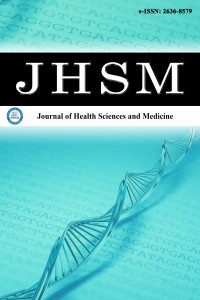1.
Hiersch L, Attali E, Melamed N. Special considerations regarding antenatal care and pregnancy complications in dichorionic twin pregnancies. Am J Obstet Gynecol MFM. 2022;4(2S):100500. doi:10.1016/ j.ajogmf.2021.100500
2.
Miremberg H, Nassar M, Herman HG, et al. Is there an impact of fetal sex in dichorionic discordant twins on placental histopathological abnormalities? Eur J Obstet Gynecol Reprod Biol. 2022;274:166-170. doi: 10.1016/j.ejogrb.2022.05.030
3.
Shaked AB, Pariente G, Wainstock T, Sheiner E. The association between gender in dichorionic-diamniotic twin pregnancies and the risk for long-term respiratory morbidity. Am J Obstetr Gynecol. 2023;228(1):S81. doi:10.1016/j.ajog.2022.11.177
4.
Al-Qaraghouli M, Fang YMV. Effect of fetal sex on maternal and obstetric outcomes. Front Pediatr. 2017;5:144. doi:10.3389/fped.2017.00144
5.
Di Renzo GC, Rosati A, Sarti RD, Cruciani L, Cutuli AM. Does fetal sex affect pregnancy outcome? Gend Med. 2007;4(1):19-30. doi:10.1016/s1550-8579(07)80004-0
6.
Paul M, Zakar T, Phung J, et al. 20α-hydroxysteroid dehydrogenase expression in the human myometrium at term and preterm birth: relationships to fetal sex and maternal body-mass index. Reprod Sci. 2023;30(8):2512-2523. doi:10.1007/s43032-023-01183-2
7.
Retnakaran R, Kramer CK, Ye C, et al. Fetal sex and maternal risk of gestational diabetes mellitus: the impact of having a boy. Diabetes Care. 2015;38(5):844-851. doi:10.2337/dc14-2551
8.
Muhcu M, Özdamar Ö, Gün İ, Özden O, Müngen E, Atay V. The impact of the fetal gender on ultrasonographic fetal biometric parameters. Zeynep Kamil Tıp Bülteni. 2014;45(2):55-60.
9.
Bülbül Baytur Y, Yıldız H, Özler A, İnceboz Üs, Çağlar H. Cinsiyetin fetal ultrason ölçümleri üzerine etkisi: cinsiyete özgü büyüme eğrileri gerekli mi? Perinatol Derg. 2006;14(1):26-30.
10.
Banjac L, Kotur-Stevuljevic J, Gojkovic T, Bokan-Mirkovic V, Banjac G, Banjac G. Relationship between insulin-like growth factor type 1 and intrauterine growth. Acta Clin Croat. 2020;59(1):91-96. doi:10.20471/acc.2020.59.01.11
11.
Stenhouse C, Bazer FW, Ashworth CJ. Sexual dimorphism in placental development and function: comparative physiology with an emphasis on the pig. Molecul Reproduct Devel. 2023;90(7):684-696. doi:10.1002/mrd.23573
12.
Wilms FF, Vis JY, Oudijk MA, et al. The impact of fetal gender and ethnicity on the risk of spontaneous preterm delivery in women with symptoms of preterm labor. J Matern Fetal Neonatel Med. 2016;29(21): 3563-3569. doi:10.3109/14767058.2016.1139566
13.
Melamed N, Yogev Y, Glezerman M. Fetal gender and pregnancy outcome. J Matern Fetal Neonatal Med. 2010;23(4):338-344. doi:10.3109/ 14767050903300969
14.
Jelenkovic A, Sund R, Yokoyama Y, et al. Birth size and gestational age in opposite-sex twins as compared to same-sex twins: an individual-based pooled analysis of 21 cohorts. Scientific Reports. 2018;8(1):6300. doi:10.1038/s41598-018-24634-2
15.
Bayraktar B, Vural T, Gölbaşı C, Gölbaşı H, Bayraktar MG. Effect of co-twin fetal sex on fetal anthropometry and birth time in twin pregnancies. J Obstet Gynaecol Can. 2021;43(10):1153-1158. doi:10.1016/j.jogc.2021.02.113

